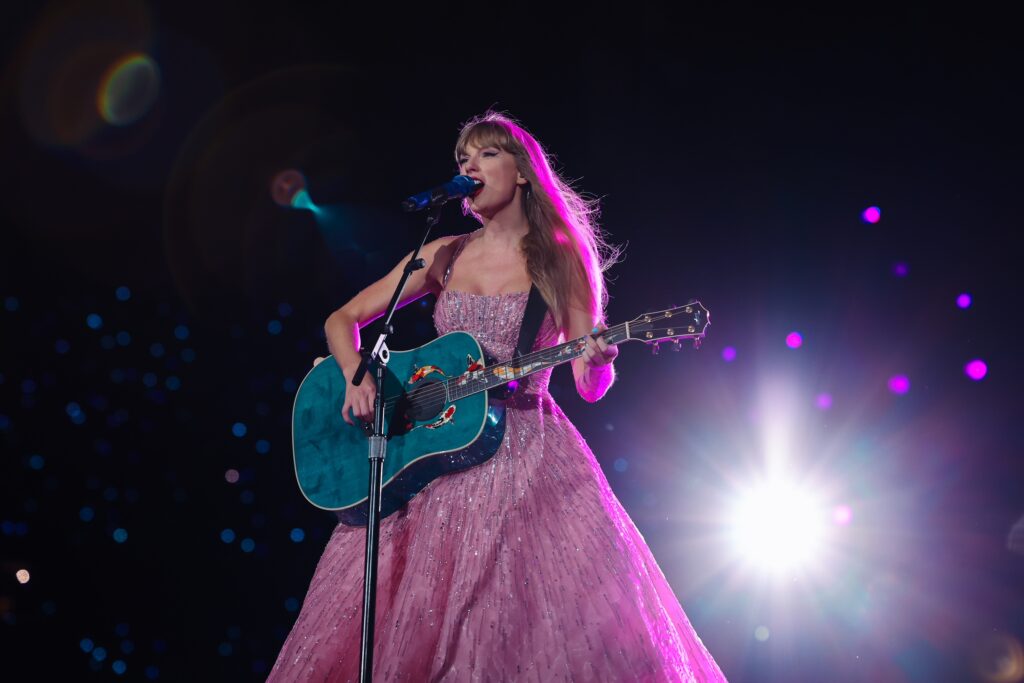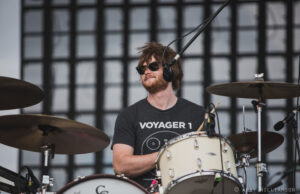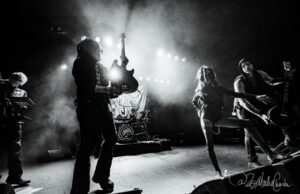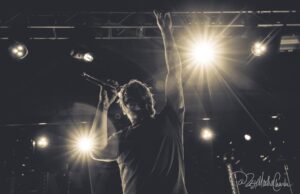Taylor Swift at Lumen Field (Barbenheimer’s Version)

Taylor Swift is Barbenheimer. She has all the glittering fun, female empowerment, and emotional vulnerability of Barbie. And she has the (arguably unnecessarily) long runtime, and explosions, of Oppenheimer. But more on this later.
Because right now, I don’t know about you, but I’m feeling 82. I woke up the morning after Taylor Swift’s second Seattle mega-concert with cramped calves, sore feet, tight hips, and an aching lower back. After more than six hours standing and dancing in place with 72,000 Swifties at Lumen Field, I’m bone tired. But I’m also full to bursting with the spectacle, and yes, wonder, of watching the biggest pop star in the world put on the biggest show I’ve ever seen. This, after Swift had pulled off that same feat for another sold out crowd the night before.
And let it be said: she was immaculate. For three hours and twenty minutes Swift sang, played, and danced her way up and down the stages, and up, down, and through the many Broadway-level set pieces. She smiled, crawled, dove, belted, and soared. And yet, even in ultra high def video and dozens of feet tall, I don’t think I ever saw her break a sweat or pause to catch her breath.
All subjective matters of taste aside, Swift really is an amazing performer. And despite my iconoclastic tendencies to eschew mainstream pop culture that has passed me by, she completely won me over.
The pandemic waylaid Swift’s previous touring plans. But she has been on a creative tear since 2020, releasing a staggering three studio albums and three re-recorded albums as (Taylor’s Version) to regain control of her catalog and masters from a contentious record deal.
Having not toured in 5 years, Swift pulled out all the stops for her marathon Eras run. Her 6th major tour is a 45-song crash course through all her musical manifestations, full of easter eggs and references to her nearly 20-year output. The US portion kicked off in Glendale, Arizona in March and wraps up in Los Angeles (Inglewood) next month. Then it’s off to Latin America, Asia, and Europe through 2024, for 131 shows all told.
With 10 distinct acts and massive theatrical sets and costumes, Eras is a tightly orchestrated performance. Save for some small tweaks and a couple of “surprise songs” during the acoustic portion, it remains largely unchanged night to night. Fans (or casually curious music writers cramming for an upcoming assignment) could easily read extensive notes on each song, tableau, and outfit that would appear.
So it shouldn’t have been a surprising show. Yet it was full of surprises. In one startling moment at the end of her acoustic set, she dove into and through a hole in the stage extension. Video projected her swimming underwater the length of the catwalk to emerge hundreds of feet away, in a new outfit, for the next era. Even though I, and presumably those around me who’d read about the tour knew it was coming, we still gasped.
Somehow, Swift and her team of choreographers, dancers, technicians, stage managers, and band mates made last night feel truly special; like that single event was just for us, and that we were all a part of making it special. She spoke several times of how much she appreciated the crowd, all the effort that went into getting there (on a Sunday night no less), how great they (we, but I exclude myself from the compliments here) dressed and danced, and how they gave their absolute all.
A concert like this is inevitably as much or more about the spectacle than the music. Because the live band was more often than not tucked away out of the spotlight, I found myself wondering how extensively backing tracks were being used (unclear, but it sounded great and there were times Taylor and the band were very clearly playing). But this was a Taylor Swift show, and the focus rightly remained on her throughout.
Scenes with talented dancers or carefully arranged musicians told theatrical mini stories, with great moments of interaction and fun. And, like an actor, Swift gives great face. She can express so much with an arched eyebrow, a flipped look over the shoulder, or a smile. She is an absolute pro, and somehow makes the herculean effort of her performance seem effortless. Full credit is due to her live video team as well for capturing small moments so well throughout. It really helped to make a show this large and rote feel live and vibrant.
And, while Swift was absolutely composed down to the slightest detail (like her in-ear monitors’ battery pack artfully concealed in matching fabric of a gorgeous flowing green gown), she also somehow conveyed a genuine joy, crowd connection, and at times even a delightful goofiness.
Swift, 33, is an undeniable icon, the second richest woman in music, on track for the highest grossing tour of all time, playing to tens of thousands each night. Yet she managed to come across as real, and almost approachable. It’s a tight wire act of balancing astronomical fame and vulnerable humanity that she treads perfectly, backwards, and in high heels. Was it real, or just an immensely expensive and meticulously rehearsed illusion? In the end, that philosophical difference hardly seemed to matter.
The fan fervor and unprecedented ticket demand generated by the Eras tour has been compared to Beatlemania, which was at its peak in the summer of 1965 when the Fab Four played a historic night at New York’s Shea Stadium, the first such major stadium concert. My mom, then 14, was one of 55,000 fans screaming at the Beatles. She attests to the band being largely inaudible over the frenzied cheering, and through Shea’s weak sound system.
Thankfully, stadium shows have come a long way since then. Lumen Field is known as one of football’s loudest venues, with 12th Man fans reaching an ear-splitting 136.6 decibels at a 2013 Seahawks game. And yes, Swifties got very loud cheering and singing throughout the night. But the sound system and its carefully placed and timed repeaters were more than adequate (in fact, I felt worried for anyone not using earplugs).
I also very much appreciated just how hushed the crowd got for several of the night’s more tender moments, allowing the space to feel unified in reverie both silent and booming by turns. One of the benefits of an all ages and female dominated crowd was a distinct lack of hooting, drunken bros shouting unnecessary requests at the performer. The vibes were great throughout, and the assigned seats, while unused for sitting, meant no pushing or jostling for position.
Plus, the show made great use of performance space. A huge main stage took up the entirety of one endzone, backed by an absolutely enormous high definition screen, with band members generally clustered out of the limelite far to either side. A long runway ramped down towards center field, where it met a diamond-shaped center stage with sections that could rise and fall independently, and then continued to a narrower final stage terminating some two-thirds of the way down the field. Swift made full use of all this real estate, giving thousands of fans the feeling of being in the front rows.
And I feel this is something I should now make plain, each live experience, and subsequent review, being, of course, subjective: I am not a Swiftie. Of course, being an American Millennial, I am largely–if tangentially–aware of Swift’s output and cultural impact. But I did not plan to attend this show. It was only through a set of serendipitous circumstances that a last minute chance to review came up. I jumped at the opportunity to spend a once in a lifetime night with an artist seemingly at the peak of her power, even if I was going as an outsider. And boy did I feel lucky, if a bit of a self conscious imposter among so many true fanatics who knew every word of every song. I took my wife to help me process the experience, and to share in an event that seemed genuinely impossible for so many to get tickets to.
In 1729 Jonathan Swift modestly–and satirically–proposed that the problem of Irish poverty might be solved by children being sold to, and eaten by, wealthy gentry. Judging from the flood of posts of people desperate to find any way into a sold-out Taylor Swift stop, the incredible lengths fans were going in order to attend, and from the incredibly high scalper prices for even the nosebleeds at Sunday’s show, a Swiftian bargain for entry might not have seemed entirely off the table.
Thankfully, many kids were safely in attendance and remained uneaten. So more like the elder Swift’s Gulliver’s Travels we, lilliputians and aging millennials alike, were transported to each corner of fantastical worlds of an artist’s unique imagination.
And reader, forgive me for twisting the knife, but the seats we were given for this journey through Taylor time were unbelievable. We were on the floor, center stage, just 9 rows back from the edge of the final thrust. When Swift sang her acoustic surprise songs, including her first ever live performance of “Message In A Bottle” from her 2021 re-recording of Red, and the tour debut of “Tied Together With A Smile”, I could see every wisp of her blond hair wafting in the breeze. She was just feet from me, somehow singing to me, yet to 72,000 others at the same time.
I say this not to revel in my good fortune, but because I couldn’t help wonder if fans in the 300 section, those with limited view, those who had traveled countless miles, who had drained their savings, battled long lines and waited in the sun for hours, if they were enjoying as much as I was.
How could a single concert be worth hundreds or thousands of dollars? Could a night like this stand up to the weight of its hype? I don’t know. All I can say is that it certainly felt like the crowd hung on every moment and belted every verse with full abandon. I heard so many utterances of disbelief and ecstasy from those around me, and saw hugs and high fives and misty eyes.
The sheer size of the event was an experience unto itself. My wife and I got caught up in the fever and spent hours nervously planning our routes to and from the show, discussing how to deal with insane Seattle traffic, tactics for lines and crowds, footwear strategies, and the like. In the end, Lumen was fairly well set up. We arrived at about 6, after many fans had already entered or were stuck in long merch lines, and made our way to our seats with little delay. The city had thoughtfully set up free shuttle buses to and from downtown, so we hopped on a bus with ease at the end of the night.
One hiccup was problematic bathroom waits. There were no lines for the men’s room until the break just before Swift’s set, when enterprising people of all genders decided to use whatever bathroom they could. Even with banks of porta potties set up outside, there were simply not enough facilities at this football stadium to let those who preferred stalls to pee in a timely fashion.
Of course, food and drink prices were a gouge, as to be expected, but water fountains and cups were readily available. So I stayed hydrated and entirely sober, transported by the psychedelic experience of the scale and collective energy of the moment.
Now, back to my thoughts on Taylor Swift as a certain iconic Mattel doll. This happened to be my pinkest weekend ever, having seen Barbie on its opening day Friday. And the heavily femme crowds at Lumen, decked in sequins and ruffles, would have fit right in with the Barbie audience. It was during the Reputation/Speak Now transition of “Look What You Made Me Do” into “Enchanted” that I concluded Swift is Stereotypical Barbie (if you’ve seen Gerwig’s excellent movie, you’ll know this is not an insult).
I’m not claiming to be some genius for coming up with this. The set for “Look What You Made Me Do” made it pretty plain. Swift’s dancers were arranged in a row of plexiglass boxes, “each dressed in iconic outfits that Swift has worn in different eras, a metaphor for her old albums being behind glass and not hers anymore,” according to a Swiftie friend who was at Saturday’s show. Still, to my untrained eyes they certainly read as boxed up dolls, pounding to be released until a triumphant crescendo saw them (and Swift by metaphorical extension) freed from their bonds.
After this upbeat banger Swift disappeared for one of several impressively smooth costume changes of the night. As the downtempo ballad of “Enchanted” kicked in, she reemerged from a door in the screen bedecked in a flowing pink ball gown, every inch of Barbie beauty perfection.
But, much like Margot Robbie’s on-screen manifestation of Mattel, Taylor Swift is not one to be limited, as a pop icon or artist or woman. And time and again her lyrics make use of the complicated feelings of being a human, of love and loss and struggle, to lay bare a relatable rawness that strikes deep.
Female empowerment is indeed a strong thread throughout Swift’s body of work. A powerful early example came in the third song “The Man”, where Swift donned a sequined power suit and ascended a three story office scene. Surrounded by guffawing, obnoxious businessmen dancers, she pushed past to ascend to her rightful place in an executive chair throne while singing “I’m so sick of running as fast as I can / Wondering if I’d get there quicker if I was a man.”
Yet, of course, even in such a femme crowd, there are many ways it was still a man’s world. Time and again Swift sings of taking back her power from a man who hurt her. At one point she told the crowd, in speaking about common themes in her writing, that she loves to “womansplain to men how to apologize.” But she was quick to say that she was not talking about the men in attendance, that we had shown our emotional intelligence just by being there. It struck me in that moment as an unnecessary apology for righteous anger, a sort of presupposed “not all men” self consciousness that undercut her message. Like the Barbie movie, I felt men were let off too easily. Teased, but not truly brought to task.
Of course, it is not the responsibility of Taylor Swift or Greta Gerwig to topple the patriarchy alone, and my own responsibility as a cis white man to dismantle the systems of oppression from which I benefit is certainly a more potent road for reflection and change. Anyway, I’m not sure the audience or what readers of this review remain care about these sociopolitical musings. Still, any artist or artwork with such wide impact is worthy of viewing through various wider lenses. But let’s get back to the concert, shall we?
Presumably, each fan has their own favorite eras. In my limited dives into the Taylorverse I have found myself drawn much more to her post-country electropop eras of 1989 and Lover (Folklore and Evermore’s indie-folk I could kind of take or leave, though they weave good tales). I particularly like her most recent 10th album Midnights, whose dream pop melds with a new sort of lyrical vulnerability that goes beyond heartbreak and into a self doubt that I find fascinating.
On Mastermind she sings, “No one wanted to play with me as a little kid / So I’ve been scheming like a criminal ever since / To make them love me and make it seem effortless.” It feels like a thrilling peek behind the curtain of her celebrity and drive.
The color coordinated era/album order of the setlist meant I would have to wait until the end for my newfound favorite songs, and by then I was truly flagging. It was tight quarters on the floor, we’d skipped dinner, and my feet were starting to go numb. But the entirely acoustic and spectacle-free surprise songs allowed my senses to reset from all the lasers, pyrotechnics, and 3D multi-story sets. And as the chilled out but dancey bass and synths of “Lavender Haze” kicked in, I started to dance again and found a well of energy to bring me through the poignantly funny “Anti-Hero” and fierce “Vigilante Shit”, right up to the climactic “Karma” show-stopper with its soaring fireworks to close out the night at around 11:45.
Honestly, for me, it all felt a bit too long. I say this knowing full well that many Swifties would have happily stayed indefinitely, singing and dancing until they eventually collapsed from exhaustion. But I think Swift could have done half as much and still put on a full and satisfying show. She clearly didn’t come to mess around, and gave fans (or unprepared casuals like me) more than they bargained for.
Opener Gracie Abrams brought power pop with singer songwriter sensibilities to a tight, breezily short set. Next, sister trio and Swift collaborators HAIM were awesome, and it was a highlight to see them having so much fun together on such a massive stage (as well as joining Swift later for “no body, no crime”, which had debuted on the tour at Saturday’s show, replacing “‘tis the damn season”). And then on to one of the longest sets of Swift’s career. It felt, at times, like a marathon I had accidentally stumbled into, untrained and in street clothes. However, if I were even half the fan of those around me, I clearly would have found the energy to endure and scream for more.
The lyrics from “22” (the 21st song of the night) struck me as a near perfect summation for the Eras event itself. When she sang, “We’re happy, free, confused and lonely in the best way / It’s miserable and magical, oh yeah,” I couldn’t scribble in my notes fast enough that this was exactly how I was feeling at that very moment.
I had made friends with my row mates in between sets. As the stadium lights blazed on and the crowd shuffled for the exits or blocked the path for yet another round of selfies, one of them turned to me and asked, “was that the best show you’ve ever seen?” I thought for a beat and answered her, honestly, “I don’t know about the best, but certainly the most epic.”
If ticket prices for the Eras tour are any indication (from $49 to $549 face value before fees, and averaging $1,605 resale), Taylor Swift and I are probably never, ever, ever getting back together. But for one night only, I found myself absolutely wrapped up in her magic, and singing her songs all the way home. I may not have deserved it, but I was absolutely blown away.





0 comments